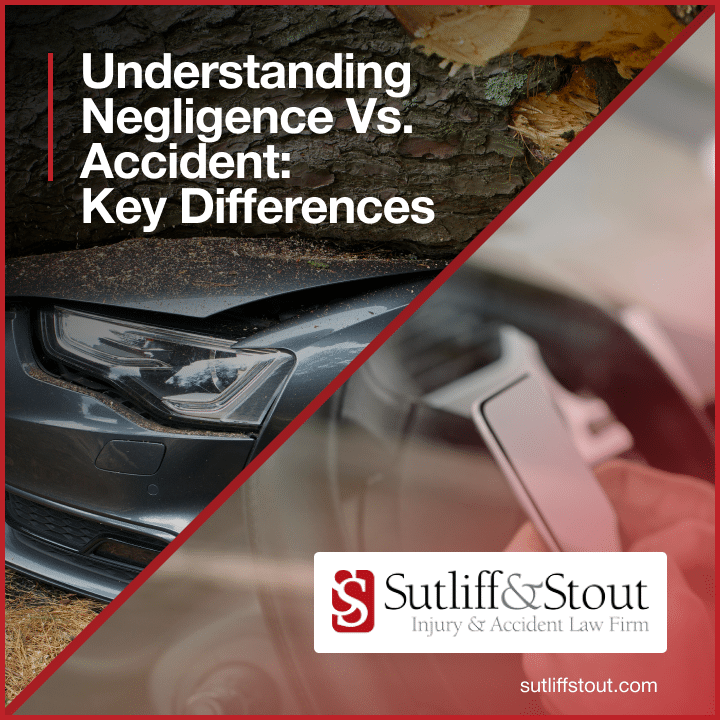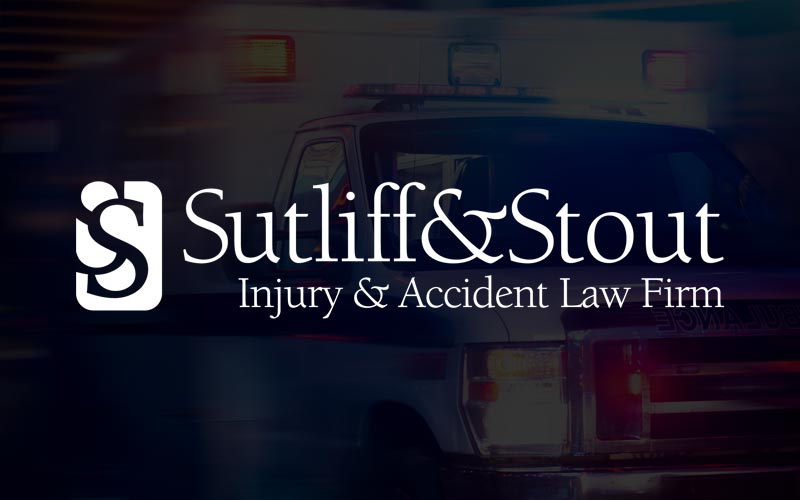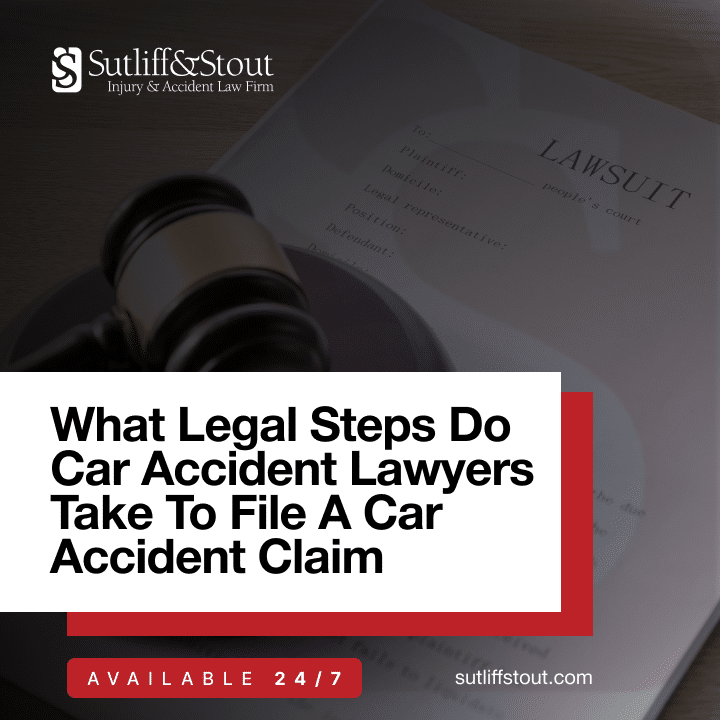
When dealing with personal injury claims, understanding the distinction between negligence and an accident is crucial. While both involve harm or injury, they differ significantly in legal terms. The personal injury lawyers at Sutliff & Stout are experienced in helping clients navigate these complex issues. In this post, we will explain the key differences between negligence and an accident, why the distinction is important, and how the lawyers at Sutliff & Stout can help you pursue compensation for your injuries.
What is Negligence?
Negligence refers to a failure to take reasonable care or act in a way that avoids causing harm to others. It involves a breach of a legal duty and often results in injuries or damage. Negligence is usually unintentional, but the harm caused could have been prevented with proper care.
What is an Accident?
An accident, on the other hand, is typically an unintentional event that results in harm, injury, or damage. Accidents are often unforeseen and occur despite a person’s best efforts to act safely and responsibly. While accidents may cause harm, they do not always involve negligence.
How Do Negligence and Accidents Differ Legally?
The legal distinction between negligence and accidents is vital when pursuing personal injury claims.
Intent
Negligence Lacks Intent. Negligence occurs without intent to harm but results from failure to meet a standard of care. For instance, a driver might fail to yield at a stop sign, causing a crash, but they did not intend to harm anyone.
Accidents Are Unintentional. Accidents occur without intent to cause harm, often due to unforeseen circumstances. A person might accidentally trip over an object and fall, resulting in injury.
Foreseeability
Negligence Involves Foreseeable Harm. In negligence cases, harm is typically foreseeable. For example, it is foreseeable that texting while driving can lead to an accident and injury.
Accidents Lack Foreseeability. Accidents, by definition, are unintentional and usually happen due to unexpected factors. They are not generally predictable or preventable.
Why is the Distinction Important?
Understanding the difference between negligence and accidents is important because it affects the legal consequences and the ability to recover damages. The personal injury attorneys at Sutliff & Stout can help you navigate these complexities to ensure that your rights are protected.
Legal Consequences
Negligence Leads to Liability. When negligence is proven, the responsible party is typically held liable for damages, meaning they can be forced to compensate the injured party.
Accidents May Not Result in Liability. In the case of an accident, there might be no one at fault, so there may be no legal basis for liability. If the harm resulted purely from chance or unforeseeable events, no one may be held responsible.
Insurance Implications
Negligence Claims Affect Premiums. If negligence is involved in an injury, it could impact insurance premiums for the person at fault. For example, a driver who causes an accident due to negligence may face higher car insurance rates.
Accidental Claims and Coverage. Accidental injuries may be covered by insurance, but without negligence, insurance payouts may be more limited or complicated.
How Can Negligence Be Proven?
Proving negligence in a personal injury case is a crucial part of securing compensation for your injuries. To establish negligence, several key elements must be proven. The personal injury attorneys at Sutliff & Stout have extensive experience helping clients navigate these steps and will work diligently to build a strong case on your behalf.
1. Duty of Care
Existence of a Legal Duty. The first step in any negligence case is proving that the defendant owed you a duty of care. A duty of care is a legal obligation to act in a manner that prevents foreseeable harm to others.
For example:
A driver has a duty to operate their vehicle safely and follow traffic laws to avoid causing accidents.
A property owner has a duty to maintain their premises in a safe condition.
A medical professional has a duty to provide care according to accepted medical standards.
2. Breach of Duty
Failure to Meet the Standard of Care. A breach of duty occurs when the defendant fails to meet the standard of care that a reasonable person would have followed in similar circumstances.
For example:
A driver may breach their duty of care by running a red light or texting while driving.
A property owner may breach their duty by failing to clean up a spill, creating a hazardous condition.
A doctor may breach their duty by misdiagnosing a patient.
3. Causation
Direct Cause of Harm. To prove negligence, you must show that the defendant’s breach of duty directly caused the harm you suffered.
Causation can be broken down into two parts:
Actual Cause (Cause-in-Fact): This is the direct link between the defendant’s conduct and the harm you suffered.
Proximate Cause: This refers to whether the defendant’s actions were a foreseeable cause of your injury.
4. Damages
Quantifiable Loss or Injury. The final element in proving negligence is showing that you suffered damages as a result of the defendant’s actions.
Common types of damages include:
Medical bills
Lost wages
Pain and suffering
Property damage
What Are Common Examples of Negligence and Accidents?
Negligence in Healthcare
Misdiagnosis: A doctor failing to correctly diagnose a condition due to a lack of proper examination may be considered negligent.
Surgical Errors: Surgical mistakes that result in injury, such as performing the wrong procedure, are classic examples of medical negligence.
Accidental Injuries at Home
Slip and Falls: A person may slip on a wet floor at a store due to negligence in cleaning, or they may simply trip accidentally on their own stairs without anyone at fault.
DIY Project Mishaps: Injuries caused by accidents while doing home repairs can result from poor planning or unforeseeable issues.
Your Recovery Starts Here – Book a 100% Free Consultation!
If you’ve been injured and aren’t sure whether negligence or an accident was the cause, the car accident attorneys at Sutliff & Stout are here to help. We offer free consultations to discuss your case and help you understand your legal options. Contact us today to get the expert legal assistance you need in your personal injury claim.
- Understanding Negligence Claims: Key Elements and Proof - April 6, 2025
- Negligence vs. Accident: Key Differences - April 6, 2025
- What Legal Steps Do Car Accident Lawyers Take to File a Car Accident Claim - March 15, 2025




 (713) 405-1263
(713) 405-1263  550 Post Oak Blvd, Suite 530
550 Post Oak Blvd, Suite 530